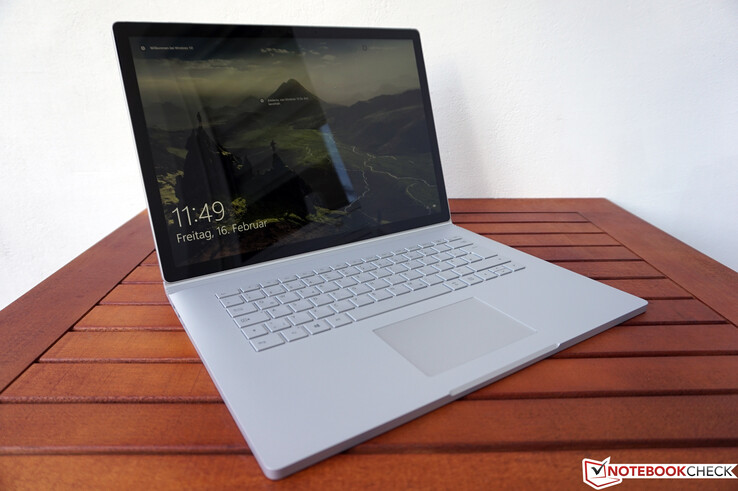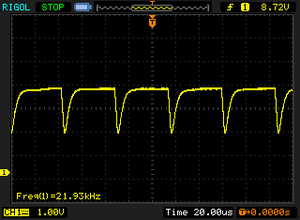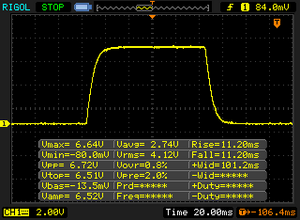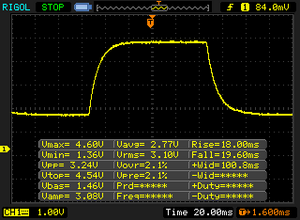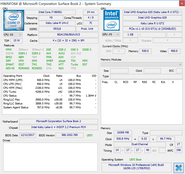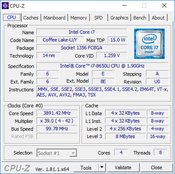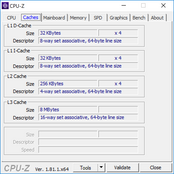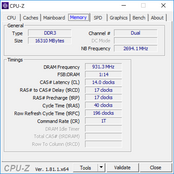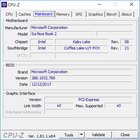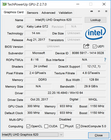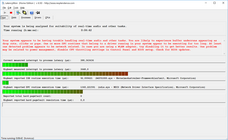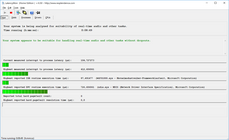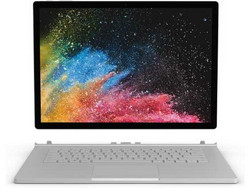Breve Análise do Portátil Microsoft Surface Book 2 (15", i7, GTX 1060)
Os Top 10
» Os Top 10 Portáteis Multimídia
» Os Top 10 Portáteis de Jogos
» Os Top 10 Portáteis Leves para Jogos
» Os Top 10 Portáteis Acessíveis de Escritório/Empresariais
» Os Top 10 Portáteis Premium de Escritório/Empresariais
» Os Top 10 dos Portáteis Workstation
» Os Top 10 Subportáteis
» Os Top 10 Ultrabooks
» Os Top 10 Conversíveis
» Os Top 10 Tablets
» Os Top 10 Smartphones
» A melhores Telas de Portáteis Analisadas Pela Notebookcheck
» Top 10 dos portáteis abaixo dos 500 Euros da Notebookcheck
» Top 10 dos Portáteis abaixo dos 300 Euros
Size Comparison
Cintilação da tela / PWM (modulação por largura de pulso)
| Tela tremeluzindo/PWM detectado | 21930 Hz | ≤ 50 % configuração de brilho | |
A luz de fundo da tela pisca em 21930 Hz (pior caso, por exemplo, utilizando PWM) Cintilação detectada em uma configuração de brilho de 50 % e abaixo. Não deve haver cintilação ou PWM acima desta configuração de brilho. A frequência de 21930 Hz é bastante alta, então a maioria dos usuários sensíveis ao PWM não deve notar nenhuma oscilação. [pwm_comparison] Em comparação: 53 % de todos os dispositivos testados não usam PWM para escurecer a tela. Se PWM foi detectado, uma média de 8091 (mínimo: 5 - máximo: 343500) Hz foi medida. | |||
| |||||||||||||||||||||||||
iluminação: 89 %
iluminação com acumulador: 446 cd/m²
Contraste: 1784:1 (Preto: 0.25 cd/m²)
ΔE ColorChecker Calman: 1.7 | ∀{0.5-29.43 Ø4.78}
ΔE Greyscale Calman: 1.7 | ∀{0.09-98 Ø5}
92.9% sRGB (Argyll 1.6.3 3D)
58.6% AdobeRGB 1998 (Argyll 1.6.3 3D)
Gamma: 2.11
CCT: 6384 K
| Microsoft Surface Book 2 15 LG Philips LGD0554, , 3240x2160, 15" | Razer Blade (2017) UHD BEO0743, , 3840x2160, 14" | Dell XPS 15 9560 (i7-7700HQ, UHD) 3840x2160, 15.6" | Apple MacBook Pro 15 2017 (2.9 GHz, 560) 2880x1800, 15.4" | Microsoft Surface Book 2 Panasonic MEI96A2 , , 3000x2000, 13.5" | |
|---|---|---|---|---|---|
| Display | |||||
| Display P3 Coverage (%) | 67.8 | 89.7 | 67.9 | ||
| sRGB Coverage (%) | 94.6 | 100 | 95.7 | ||
| AdobeRGB 1998 Coverage (%) | 69 | 100 | 69.4 | ||
| Response Times | -40% | -64% | -19% | -37% | |
| Response Time Grey 50% / Grey 80% * (ms) | 37.6 ? | 51 ? -36% | 57.2 ? -52% | 42.4 ? -13% | 52.8 ? -40% |
| Response Time Black / White * (ms) | 22.4 ? | 32 ? -43% | 39.2 ? -75% | 28 ? -25% | 30 ? -34% |
| PWM Frequency (Hz) | 21930 ? | 200 ? | 962 | ||
| Screen | -36% | -72% | -4% | -5% | |
| Brightness middle (cd/m²) | 446 | 422 -5% | 370.1 -17% | 534 20% | 385 -14% |
| Brightness (cd/m²) | 444 | 402 -9% | 356 -20% | 502 13% | 372 -16% |
| Brightness Distribution (%) | 89 | 91 2% | 87 -2% | 86 -3% | 89 0% |
| Black Level * (cd/m²) | 0.25 | 0.29 -16% | 0.37 -48% | 0.31 -24% | 0.21 16% |
| Contrast (:1) | 1784 | 1455 -18% | 1000 -44% | 1723 -3% | 1833 3% |
| Colorchecker dE 2000 * | 1.7 | 3.06 -80% | 5.3 -212% | 1.8 -6% | 1.6 6% |
| Colorchecker dE 2000 max. * | 2.7 | 5.86 -117% | 9.9 -267% | 3.8 -41% | 4.5 -67% |
| Greyscale dE 2000 * | 1.7 | 3.84 -126% | 4.6 -171% | 2.4 -41% | 1.5 12% |
| Gamma | 2.11 104% | 2.52 87% | 2.31 95% | 2.27 97% | 2.22 99% |
| CCT | 6384 102% | 7100 92% | 6284 103% | 6563 99% | 6502 100% |
| Color Space (Percent of AdobeRGB 1998) (%) | 58.6 | 64 9% | 88.3 51% | 77.92 33% | 64 9% |
| Color Space (Percent of sRGB) (%) | 92.9 | 95 2% | 100 8% | 99.94 8% | 95.9 3% |
| Média Total (Programa/Configurações) | -38% /
-36% | -68% /
-71% | -12% /
-7% | -21% /
-10% |
* ... menor é melhor
Exibir tempos de resposta
| ↔ Tempo de resposta preto para branco | ||
|---|---|---|
| 22.4 ms ... ascensão ↗ e queda ↘ combinadas | ↗ 11.2 ms ascensão | |
| ↘ 11.2 ms queda | ||
| A tela mostra boas taxas de resposta em nossos testes, mas pode ser muito lenta para jogadores competitivos. Em comparação, todos os dispositivos testados variam de 0.1 (mínimo) a 240 (máximo) ms. » 49 % de todos os dispositivos são melhores. Isso significa que o tempo de resposta medido é pior que a média de todos os dispositivos testados (20.2 ms). | ||
| ↔ Tempo de resposta 50% cinza a 80% cinza | ||
| 37.6 ms ... ascensão ↗ e queda ↘ combinadas | ↗ 18 ms ascensão | |
| ↘ 19.6 ms queda | ||
| A tela mostra taxas de resposta lentas em nossos testes e será insatisfatória para os jogadores. Em comparação, todos os dispositivos testados variam de 0.165 (mínimo) a 636 (máximo) ms. » 53 % de todos os dispositivos são melhores. Isso significa que o tempo de resposta medido é pior que a média de todos os dispositivos testados (31.6 ms). | ||
Barulho
| Ocioso |
| 29.1 / 29.1 / 29.1 dB |
| Carga |
| 35.7 / 45.3 dB |
 | ||
30 dB silencioso 40 dB(A) audível 50 dB(A) ruidosamente alto |
||
min: | ||
| Microsoft Surface Book 2 15 i7-8650U, GeForce GTX 1060 Mobile, 86 Wh | Razer Blade (2017) UHD i7-7700HQ, GeForce GTX 1060 Mobile, 70 Wh | Dell XPS 15 9560 (i7-7700HQ, UHD) i7-7700HQ, GeForce GTX 1050 Mobile, 97 Wh | Apple MacBook Pro 15 2017 (2.9 GHz, 560) i7-7820HQ, Radeon Pro 560, Wh | Microsoft Surface Book 2 i7-8650U, GeForce GTX 1050 Mobile, 75 Wh | Média da turma Multimedia | |
|---|---|---|---|---|---|---|
| Duração da bateria | -46% | -32% | 7% | 5% | 7% | |
| WiFi v1.3 (h) | 10.6 | 5.7 -46% | 7.2 -32% | 11.3 7% | 11.1 5% | 11.3 ? 7% |
| Witcher 3 ultra (h) | 1.3 | 3.8 |
Após as primeiras horas com o novo Surface Book 2 15, conseguimos desenhar muitos paralelos entre ele e seu irmão menor. O novo controle deslizante de desempenho no Windows 10, mais uma vez, tem bastante impacto no ruído do ventilador. O processador no tablet resfriado de forma ativa. No entanto, esperávamos mais da solução de resfriamento melhorada (em comparação com o modelo de 13 polegadas).
A tela é mais brilhante, mas tem mais problemas com bleeding de tela e utiliza PWM para o controle de brilho. Além disso, a calibração da fábrica não é muito boa. De acordo com nossos primeiros testes, a bateria maior faz um bom trabalho para compensar o aumento do consumo de energia do painel maior e, ao navegar na web, você pode esperar mais de dez horas de duração da bateria.
Vamos realizar os testes e benchmarks restantes nos próximos dias. Ao fazê-lo, nos concentraremos principalmente nos impactos no desempenho e no consumo de energia dos vários perfis de energia.




